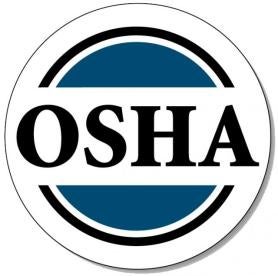Labor and business interests have dashed to the courthouse to launch lawsuits against the Occupational Safety and Health Administration’s new silica standard, underscoring the controversy over the comprehensive health rule.
The rule, released March 25, targets general industry, construction, and maritime. A hotly contested provision lowers the Permissible Exposure Limit (PEL) for worker exposure to a uniform 50 micrograms of respirable crystalline silica per cubic meter of air (µg/m3) averaged over an eight-hour shift. In addition, OSHA set an “action level” of 25 µg/m3, which triggers an employer requirement to conduct air monitoring and other mandates.
The new PEL represents about a 50 percent cut from the existing PEL in general industry and maritime and a five-fold decline in construction (expressed as respirable quartz). However, a petition filed by a labor coalition in the U.S. Court of Appeals for the Third Circuit, in Philadelphia, contended OSHA did not go far enough. The United Auto Workers (UAW), one of the petitioners, said the PEL should be set at 25 µg/m3 or lower where feasible.
“In general industry and maritime, engineering and work practice controls can reduce exposures to less than 50 μg/m3 for the vast majority of workers,” UAW said, as quoted by Inside OSHA Online. “In construction, where the changing and mobile nature of the work create more variable exposures, the preliminary feasibility analysis finds that for more than 82 percent of all construction workers engineering and work practice controls can reduce exposures to less than 50 µg/m3,” UAW added, according to the news source. The labor group was joined by the United Steelworkers and the AFL-CIO. Separately, North America's Building Trades Unions, which argues that the medical testing provisions can be improved, made its review request with the U.S. Court of Appeals for the District of Columbia.
Industry groups have complained the rule is not needed and is both technologically and economically infeasible. “OSHA’s rule is simply unnecessary, as compliance with the existing standard fully protects workers,” said Michael W. Johnson, who leads the National Stone, Sand & Gravel Association (NSSGA). Pointing out inconsistency in air sampling results furnished by commercial laboratories as an example of the rule’s technological infeasibility, Johnson added, “There would be significantly more testing required that would result in confusing, inconsistent, and unreliable data.” NSSGA has partnered with its Georgia affiliate on a filing in the Eleventh Circuit in that state. Other industry groups had filed challenges in the Fifth, Tenth, and Eighth Circuits.
Due to the many petitions filed in various circuits, the agency notified the Judicial Panel on Multi-District Litigation to determine by lottery which circuit will be the venue for the consolidated litigation. Shortly after this notification, the Judicial Panel selected the D.C. Circuit for review of the rule. All of the petitions will be consolidated for review in that circuit and the agency is expected to file the rulemaking record soon. Our attorneys are representing petitioners in several of the employer and trade group lawsuits.




 i
i

